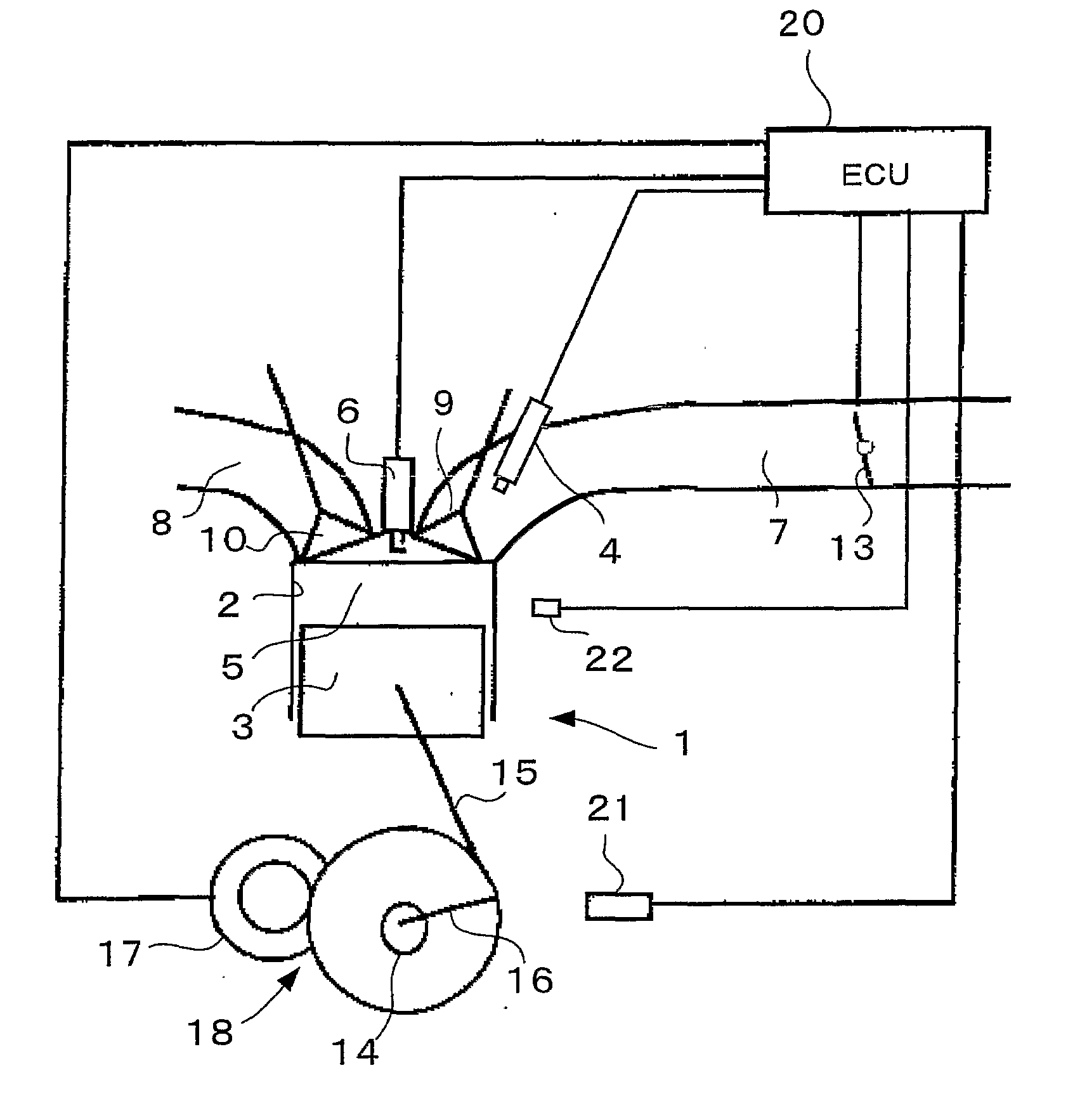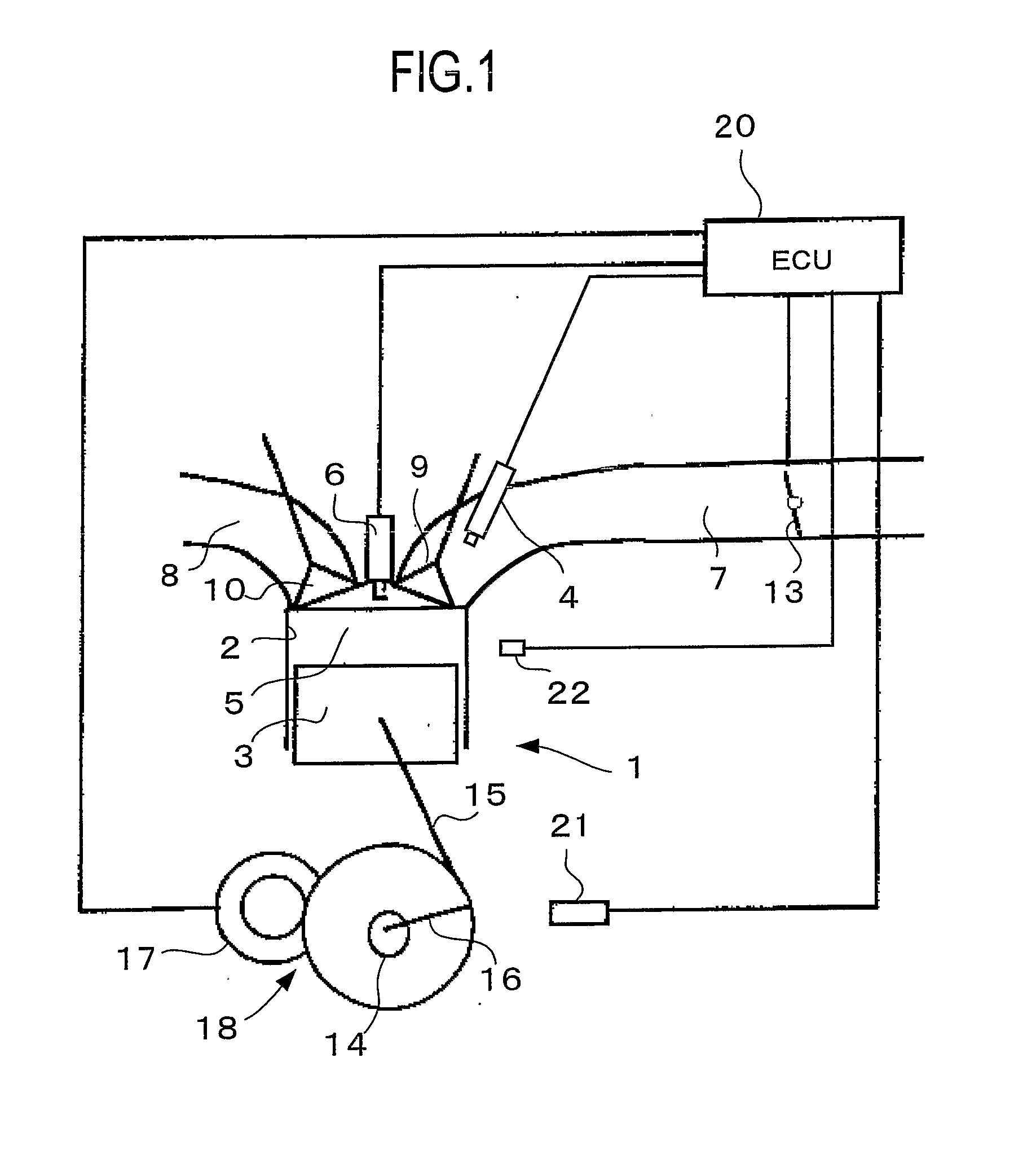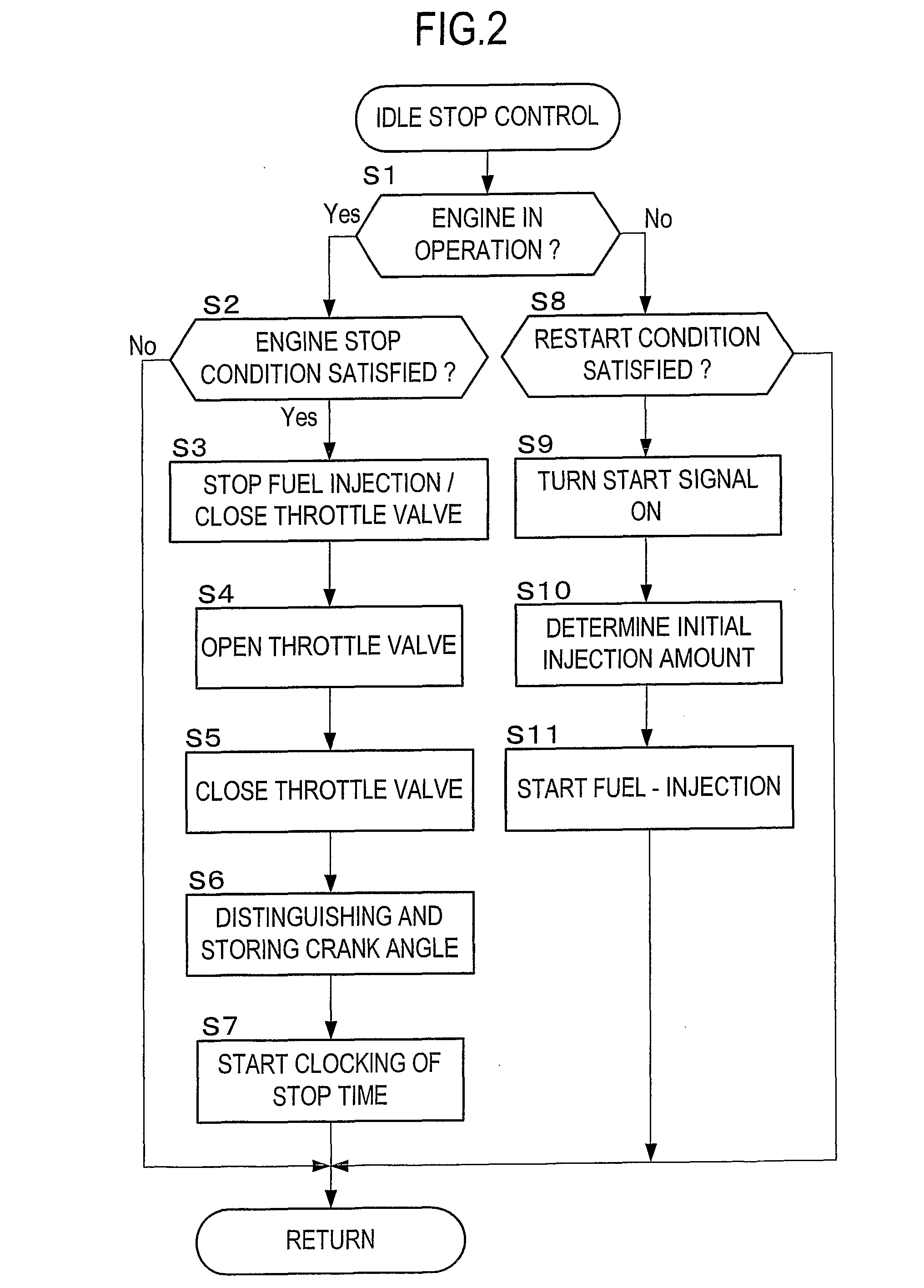[0004]Here, one of objects of the present invention is to provide a start control apparatus for an internal combustion engine capable of restraining self-ignition at starting in a cylinder in which the piston stops in an intake stroke.
[0006]According to the start control apparatus of the first aspect, more fuel is injected to the cylinder in which the piston starts its operation from the intake stroke when starting the internal combustion engine than the fuel injection amount for other cylinders. Accordingly, cylinder
temperature drop effect due to fuel
vaporization latent heat is higher in comparison with those in other cylinders, and the generation of the self-ignition is restrained by maintaining lower cylinder temperature even if the compression stroke starts under the state that
cylinder pressure increases due to suction of air during stopping. Therefore, the problems such as increase of vibration accompanying the self-ignition can be restrained, thereby starting the internal combustion smoothly.
[0008]According to the start control apparatus of the second aspect, distinguishing whether or not the position of the piston stopping in the intake stroke is within the predetermined
crank angle range from the start position of the intake stroke allows to appropriately control the fuel injection amount for the cylinder in which the piston starts its operation from the intake stroke. For example, between an initial stage and a mid stage of the intake stroke, a remaining intake time is long, intake flow rate and velocity are high fuel, so that intake air can sufficiently be mixed with each other, and intake temperature is lower than the cylinder temperature. Therefore, the cylinder
temperature drop effect due to
vaporization latent heat is effectively exerted. In such a case, the fuel injection amount is increased to restrain the generation of the self-ignition. On the other hand, in a final stage of the intake stroke, the remaining intake time is short and the intake flow rate and velocity are reduced, so that the fuel amount necessary to reduce the cylinder temperature using the
vaporization latent heat is rapidly increased. Therefore, it is difficult to provide the cylinder
temperature drop effect appropriate for the increase of the fuel. In such a case, the fuel injection amount is relatively reduced to thereby restrain problems such as deterioration of a fuel consumption and emission.
[0009]In one embodiment of the start control apparatus according to the second aspect, when the position of the piston stopping in the intake stroke is within the predetermined
crank angle range, the fuel injection amount control device may increase the fuel injection amount at starting for the cylinder in which the piston stops in the intake stroke more than a fuel injection amount for other cylinders. Alternatively, when the position of the piston stopping in the intake stroke is within the predetermined
crank angle range, the fuel injection amount control device may increase the fuel injection amount at starting for the cylinder in which the piston stops in the intake stroke more than in the case of exceeding the predetermined crank angle range. According to these embodiments, the cylinder temperature drop effect by the vaporization latent heat can certainly and effectively be exerted by increasing the fuel amount in a predetermined range from the start of the intake stroke.
[0013]Also, in one embodiment of the start control apparatus according to the first or second aspect, the fuel injection amount control device may control the fuel injection amount for a cylinder distinguished that the piston position at the stop of the internal combustion engine is in the intake stroke so that an
air fuel ratio in the cylinder becomes lean relative to a theoretical
air fuel ratio with respect to an air quantity in the cylinder. In this case, the
air fuel ratio in the cylinder in which the piston stops in the intake stroke is more lean than
stoichiometry, and therefore the
pressure increase in the cylinder when starting the internal combustion engine can be restrained, and the rising thereof would not be rapid. Therefore, although the output torque may be small, the sound and vibration can be restrained. Furthermore, injecting excessive fuel is not required, and therefore the
discharge of
carbon dioxide (HC) can be minimized.
[0014]As explained above, according to the present invention, by increasing the fuel injection amount for the cylinder subject to starting of the piston from the intake stroke, the cylinder temperature can be reduced as using the vaporization latent heat of the fuel, and the self-ignition in the compression stroke can effectively be restrained. Also, by controlling the fuel injection amount in consideration of the stop position of the piston, the self-ignition restrain effect can effectively be exerted more, while the problems such as deteriorations of the fuel consumption and emission can be restrained.
 Login to View More
Login to View More  Login to View More
Login to View More 


